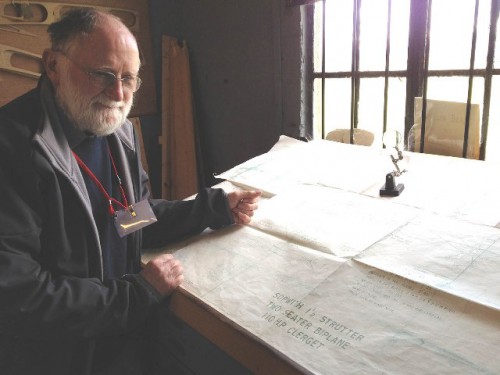A FIRST World War fighter which helped give birth to the Top Gun legend is being recreated by a dedicated team of flight enthusiasts.
A Sopwith Strutter will take to the skies above a Scottish airfield where it battled raiding German Zeppelin airships almost a century ago.
The fighter was one of the first British aircraft to have a machine gun timed to fire between the propeller blades.

It was a technical breakthrough that made aircraft efficient killing machines – and made fighter pilots into heroes.
The £250,000, self-funded project is set to pay tribute to the modern generation of tops guns by painting the the aircraft in the colours of No 43 Tornado squadron, which was disbanded in 2009.
The project began almost a decade ago and the team of 50 enthusiasts hope to have the Strutter in the air by 2016 – the centenary of its arrival at East Fortune airfield, East Lothian.
Evan Poole, a 75-year-old former engineer who is heading up the project, joked that his wife wanted to get him out of the house.
The group’s spokesman said: “It’s a condition of being on the team that you have to fly in it! It concentrates the mind a little.
“Everyone wants to fly in it.”
Recreating the aircraft involves working from original plans to custom-make thousands of components and then put them together.
The only concession the group will make to modern technology, other than using replica machine guns, is replacing the unstable rotary engine with a radial engine.
Armed with a Lewis gun and a .303 machine gun, the Strutter was used as a “trench-fighter” which would strafe enemy lines in the Great War.
Crucial was the use of an “interrupter gear” which allowed bullets to be fired between the propeller blades. This meant aircraft could pour accurate fire on targets in front of them.
But the innovations did not end there.
“The whole tailplane could be moved up and down in flight for better balance,” said Mr Poole.
“It had an airbrake, a metal flap which was under the wings which could be deployed to slow it down,” he added.
This gave the Strutter an advantage in dogfights, allowing it to move around an enemy and close in for the kill.
He continued: “Airbrakes have been standard on all fighters and jet fighters.”
It was also used to intercept German Zeppelins which threatened mainland Britain.
He added: “We’ve had permission from 43 Squadron, who have disbanded now, to paint in their colours.
“I should think they would be delighted to see it in the air again.”
Malcolm Oliver, spokesman for the Aviation Preservation Society of Scotland (APSS), said: “It would be nice to be able to link it with a squadron that had flown it.”
The National Museum of Flight has loaned the team a hangar at East Fortune airfield for the project.
They recently showed off the wooden airframe of the 100 mph aircraft next to the museum’s 1,330mph Concorde.